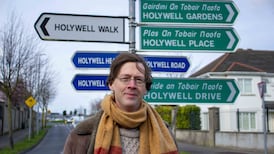By any standards the late Fr Theodore (Ted) Hesburgh, who has died aged 97, was an extraordinary Irish American. With a score of 150, he held the Guinness Book of Records title for "Most Honorary Degrees".
Throughout his latter years he lived at Notre Dame University in Indiana, in a 14-storey building named after him which also houses the Hesburgh Library.
As president of Notre Dame from 1952 to 1987 he made it the leading Catholic university in the United States: its student numbers almost doubled to 9,600, its library volumes increased fivefold and its endowment rose from $7 million to more than $400 million.
But Fr Hesburgh's achievements on the national and international stages were even more remarkable. He was nominated by President Eisenhower to the US Commission on Civil Rights and awarded the Medal of Freedom by President Johnson. He chaired the Commission on Civil Rights from 1969 and received a prestigious award for upholding academic freedom in recognition of his role in frustrating attempts by the Nixon administration to use federal troops to deal with campus disturbances during anti-Vietnam War protests.
He was appointed to 15 positions by US presidents and also served four popes, including as Vatican representative to the International Atomic Energy Agency.
It was he who, with some initial difficulty, persuaded Notre Dame's great benefactor, former Coca-Cola chairman Donald Keough, to head a committee to raise funds, since when the Keough Institute for Irish Studies at Notre Dame, endowed by Donald and Marilyn Keough from 1992, has been seen as a leader in its field.
Irish origins
Brought up in Syracuse in upstate New York, Fr Hesburgh’s father, also Theodore, was originally from Luxembourg and was an executive with the Pittsburgh Plate Glass Company. His mother was Anne Murphy, whose father, Martin, emigrated to the US from Wexford in 1857.
His mother would not allow him to go early to Notre Dame when priests came to his high school recruiting. Warned that he might lose his vocation in the interim, she replied: “If he has a real vocation he won’t lose it in two years.” He didn’t and two years later he went to Notre Dame, then to the Gregorian University in Rome. He was ordained at Notre Dame in June 1943. Nine years later he was its president.
A photograph on his office wall showed him arms linked with Martin Luther King. On a shelf there was a baseball autographed by Joe DiMaggio. Everywhere, there were awards. But perhaps his proudest possession there was a large, circular, blue and yellow carpet which took up most of the floor space.
Blue and yellow, he would explain, were “Our Lady’s (Notre Dame) colours”, while the 15 names listed along the carpet’s outer rim were of the university’s previous presidents, “all Irish except the first two”, he would say. On the obverse, the carpet revealed the legend “Made in Donegal”.
On St Patrick’s Day 2012 Taoiseach Enda Kenny presented Fr Hesburgh with an Irish passport, describing him as a “truly great Irish-American figure”.
He is survived by his brother James. Three sisters pre-deceased him.









